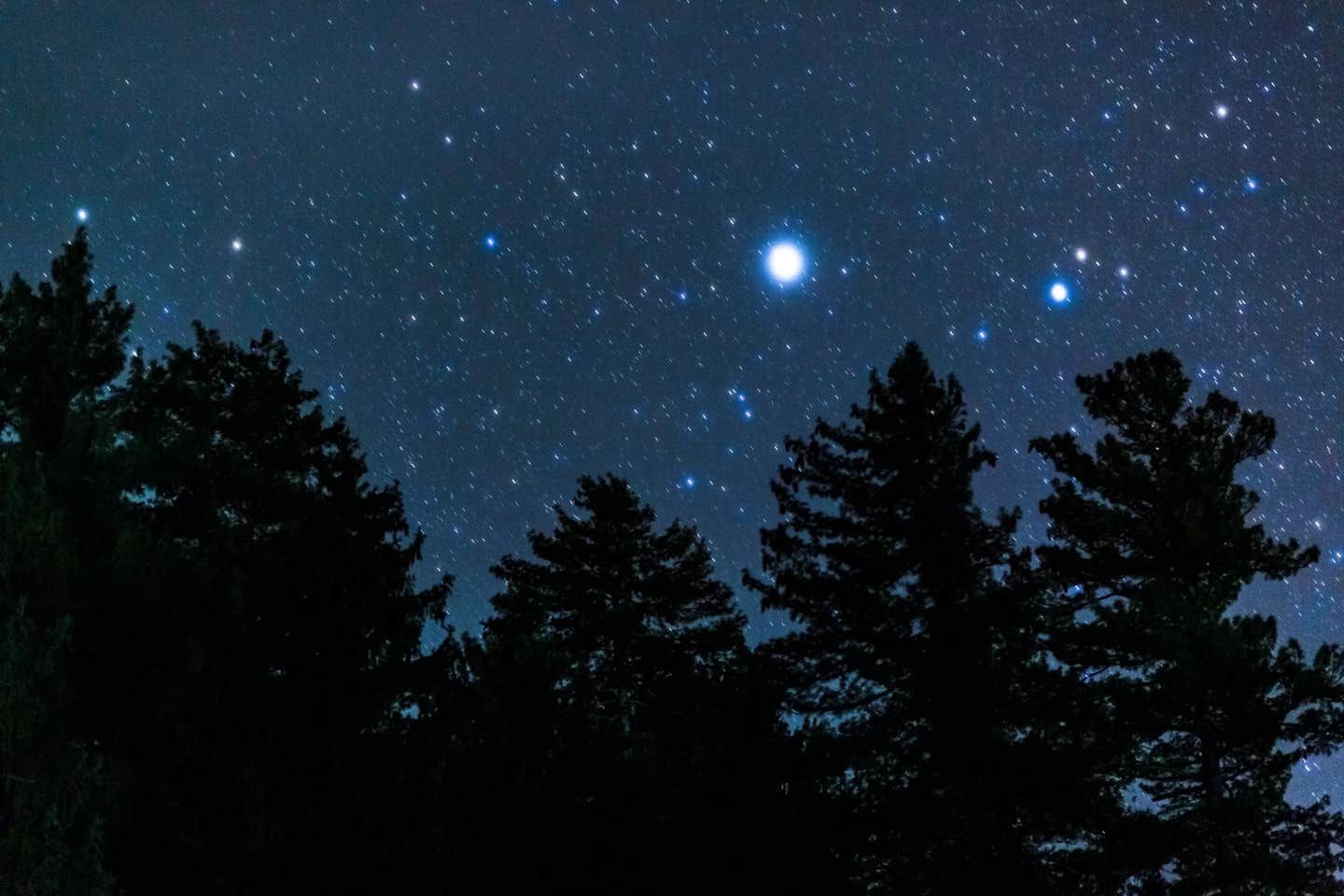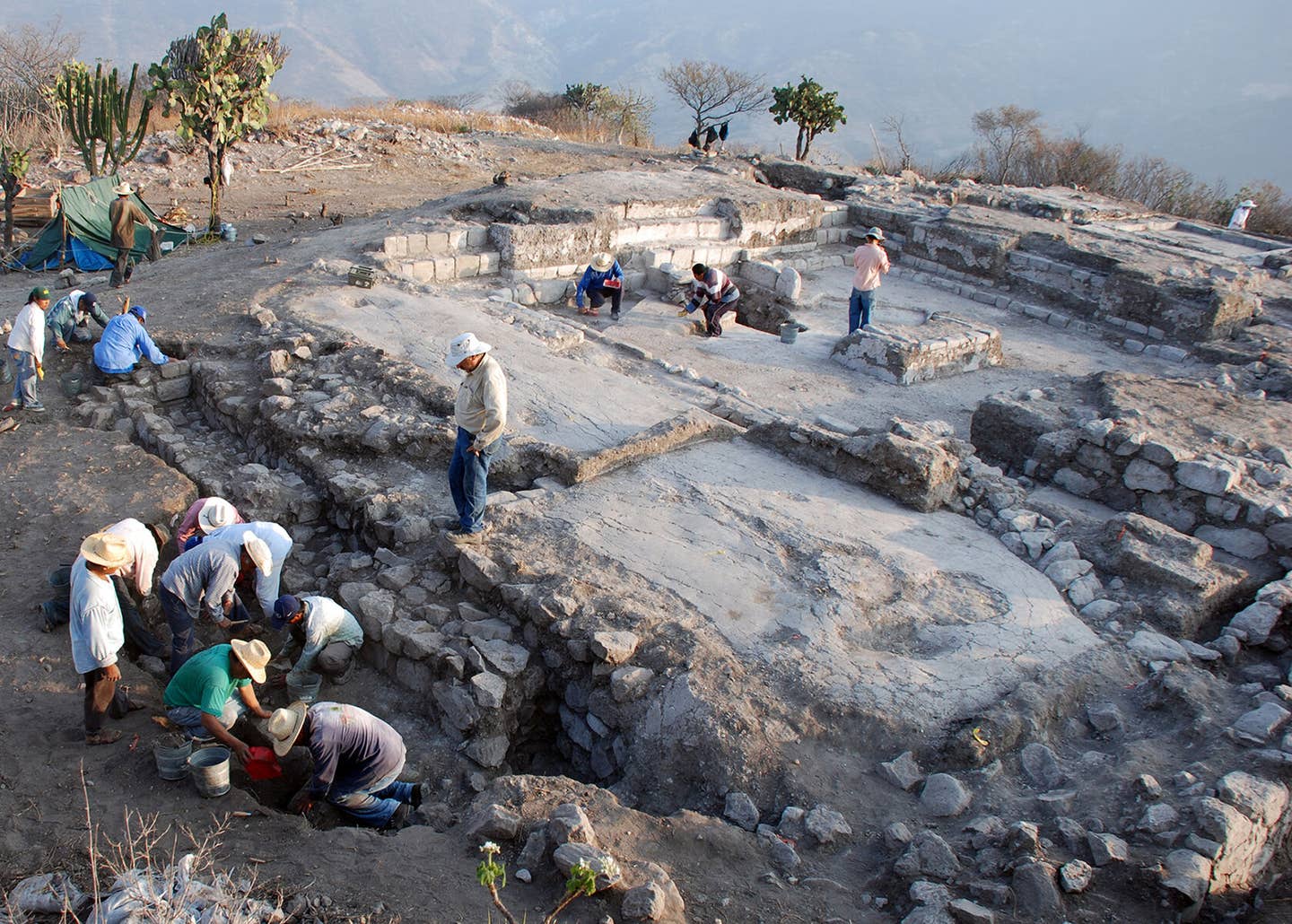Once-in-a-lifetime stellar explosion will be visible to all this summer
This summer a once-in-a-lifetime nova event is expected to occur, one bright enough to be visible to the naked eye.

This summer, the focus of astronomers, both professional and amateur, will be on a small constellation in the night sky. However, it’s not the stars of Corona Borealis, the “Northern Crown,” that are drawing attention. Instead, it's a dark spot among them where a nova event is expected to occur, one bright enough to be visible to the naked eye.
Dr. Rebekah Hounsell, an assistant research scientist at NASA’s Goddard Space Flight Center, explains, “It’s a once-in-a-lifetime event that will create a lot of new astronomers out there, giving young people a cosmic event they can observe for themselves, ask their own questions, and collect their own data. It’ll fuel the next generation of scientists.”
The event centers on T Coronae Borealis, or T CrB, also known as the “Blaze Star.” This binary system is located in the Northern Crown constellation, about 3,000 light-years from Earth. It consists of a white dwarf, the remnant of a dead star, and a red giant slowly being stripped of its hydrogen by the gravitational pull of the white dwarf.
The white dwarf accumulates this hydrogen, leading to a build-up of pressure and heat. Eventually, this triggers a thermonuclear explosion that expels the material in a bright flash, a phenomenon that recurs roughly every 80 years.
Hounsell clarifies the difference between a nova and a supernova, stating, “Don’t confuse a nova with a supernova, a final, titanic explosion that destroys some dying stars. In a nova event, the dwarf star remains intact, sending the accumulated material hurtling into space in a blinding flash. The cycle typically repeats itself over time, a process which can carry on for tens or hundreds of thousands of years.”
She adds, “There are a few recurrent novae with very short cycles, but typically, we don’t often see a repeated outburst in a human lifetime, and rarely one so relatively close to our own system. It’s incredibly exciting to have this front-row seat.”
Related Stories
The first recorded sighting of the T CrB nova was in autumn 1217 by Burchard, abbot of Ursberg, Germany. He noted a “faint star that for a time shone with great light.” The last visible outburst occurred in 1946, and current observations suggest a similar pattern of behavior leading up to a potential nova event by September 2024.
Stargazers can find the Northern Crown, a horseshoe-shaped curve of stars west of the Hercules constellation, by looking along a line between the two brightest stars in the Northern Hemisphere, Arcturus and Vega. The outburst will be visible to the naked eye for less than a week, but Hounsell assures it will be a sight to remember.
Dr. Elizabeth Hays, chief of the Astroparticle Physics Laboratory at NASA Goddard, highlights the excitement among amateur astronomers, saying, “Citizen scientists and space enthusiasts are always looking for those strong, bright signals that identify nova events and other phenomena. Using social media and email, they’ll send out instant alerts, and the flag goes up. We’re counting on that global community interaction again with T CrB.”
NASA’s Fermi Gamma-ray Space Telescope, which has observed gamma rays from low Earth orbit since 2008, is prepared to monitor T CrB’s eruption. Other missions, including the James Webb Space Telescope, Neil Gehrels Swift Observatory, IXPE (Imaging X-ray Polarimetry Explorer), NuSTAR (Nuclear Spectroscopic Telescope Array), NICER (Neutron star Interior Composition Explorer), and the European Space Agency’s INTEGRAL (Extreme Universe Surveyor), will also participate. Ground-based telescopes, such as the National Radio Astronomy Observatory’s Very Large Array in New Mexico, will contribute to capturing data across the light spectrum.
Hounsell emphasizes the importance of these observations, stating, “We’ll observe the nova event at its peak and through its decline, as the visible energy of the outburst fades. But it’s equally critical to obtain data during the early rise to eruption – so the data collected by those avid citizen scientists on the lookout now for the nova will contribute dramatically to our findings.”
For researchers, this event offers a unique chance to study the structure and dynamics of recurring stellar explosions. Hays explains, “Typically, nova events are so faint and far away that it’s hard to clearly identify where the erupting energy is concentrated. This one will be really close, with a lot of eyes on it, studying the various wavelengths and hopefully giving us data to start unlocking the structure and specific processes involved. We can’t wait to get the full picture of what’s going on.”
New Tools and Technologies
New technologies will play a crucial role in this event. Gamma-ray imagers were not available during the last eruption in 1946. IXPE’s polarization capability, which measures the alignment of electromagnetic waves to understand high-energy phenomena, is a recent addition to X-ray astronomy.
Combining data from these instruments could provide unprecedented insights into the life cycles of binary systems and their stellar processes.
However, there is always uncertainty. Dr. Koji Mukai, an astrophysics researcher at NASA Goddard, notes, “Recurrent novae are unpredictable and contrarian. When you think there can’t possibly be a reason they follow a certain set pattern, they do – and as soon as you start to rely on them repeating the same pattern, they deviate from it completely. We’ll see how T CrB behaves.”
As September approaches, the excitement and anticipation among astronomers and space enthusiasts grow. This event not only offers a spectacular show in the night sky but also promises to advance our understanding of stellar phenomena significantly. Whether you are a seasoned astronomer or a curious observer, this potential nova in the Northern Crown is an opportunity to witness the wonders of our universe firsthand.
Note: Materials provided above by The Brighter Side of News. Content may be edited for style and length.
Like these kind of feel good stories? Get the Brighter Side of News' newsletter.
Joseph Shavit
Head Science News Writer | Communicating Innovation & Discovery
Based in Los Angeles, Joseph Shavit is an accomplished science journalist, head science news writer and co-founder at The Brighter Side of News, where he translates cutting-edge discoveries into compelling stories for a broad audience. With a strong background spanning science, business, product management, media leadership, and entrepreneurship, Joseph brings a unique perspective to science communication. His expertise allows him to uncover the intersection of technological advancements and market potential, shedding light on how groundbreaking research evolves into transformative products and industries.



